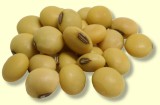Try to eat Gelato not Ice Cream
Gelato is Italian ice cream made from milk (or also soy milk –which I am going to write a post on soon –don’t have soy in the meantime!) and sugar, combined with natural flavourings.

Gelato is the Italian word for ice cream, though true gelato contains no cream. It is made with fresh fruit or other ingredients such as chocolate (pure chocolate flakes, chips, candies, truffles, etc.), nuts, small candies, sweets, or cookies.
Milk-based gelato originated in Northern Italy, while the fruit-and-water based sorbetto came from the hotter parts of Southern Italy and Sicily. Gelato al limone was always in our freezer (I can still remember the packaging in its fancy blue script on the white tub)
Other Italian treats use gelato as a main ingredient e.g. ice cream cake, spumoni, cassata, Tartufo (my favourite!) and more…
Vs. North American style ice creamsModern industrially-produced ice cream is made from:
- milk fat
- milk solids: serum solids - contains the proteins
 (caseins and whey proteins) and carbohydrates (lactose) found in milk
(caseins and whey proteins) and carbohydrates (lactose) found in milk - sweeteners: sucrose and/or glucose-based corn syrup sweeteners
- stabilizers and emulsifiers e.g., agar or carrageenan extracted from seaweed
- water which comes from milk solids or other ingredients
ew -what are all these ingredients???!?!?!
Cheaper ice creams contain lower-quality ingredients (for example, when vanilla bean is replaced with artificial vanillin).
Look up all these mysterious ingredients as am sure they are not great for you.
Over 100 million Flake 99s are sold every year in the UK and for some reason in London they do not cost 99p anymore! Well at least when we tried to buy them near London Bridge last month….why?!
So now choose your gelato wisely....visit Marine Ices http://www.timeout.com/london/restaurants/reviews/1113.html on Chalk Farm Road in Camden if you want nice gelato or somewhere like Carluccios restaurant www.carluccios.com.
Happy gelato eating!
 Antipasti anyone?
Antipasti anyone?




